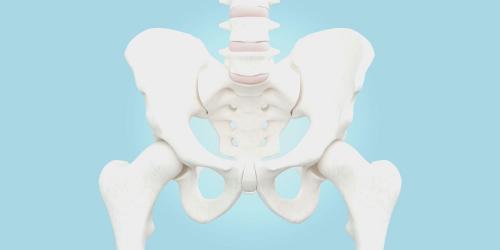Osteoarthritis is a chronic disease that affects nearly 10 million people in France and usually appears after 40 years.
It affects multiple parts of the body: cervical, lumbar, knee (we speak of knee osteoarthritis), thumbs, hips (hip osteoarthritis), ankle and shoulders.
This degenerative condition is manifested by mechanical pains, discontinuous and stiff joints. In the long term, deformities due to bone growths are formed (on the hands and knees).
Hence the importance of preventing it, or, if it is already too late, to try to slow down its evolution.
Osteoarthritis and arthritis, what differences?
Many people confuse osteoarthritis and arthritis. Admittedly, these two conditions affect the joints but they come from different mechanisms.
Osteoarthritis results from a deterioration of the cartilage, which ends up no longer acting as a shock absorber. The joints then lose their flexibility and mobility because the bones rub against each other.
Arthritis, which can occur at all ages, is caused by inflammation of the synovial membrane lining the inside of the joint. A pathology responsible for painful swelling.
Move helps slow the progression of the disease
Many people with osteoarthritis limit their movements. They dread the pain and fear to further damage their joints. Wrongly.
The cartilage, in fact, degenerates only if it is not solicited .
"Since it is not crossed by any vessel, it feeds by absorbing nutrients from the underlying bone," says Dr. Stéphane Cascua, sports physician.
To do this, it is essential that it undergo pressure variations induced by the movements. An American study published in "Arthritis Care & Research" has shown that taking 6,000 steps a day is an effective remedy for curbing the progression of osteoarthritis. A good reason to walk.
Losing a few pounds, a solution to fight osteoarthritis
Overweight is the leading risk factor for osteoarthritis of the knee, hip, spine and ankles.
Indeed, "it increases mechanical stress and promotes accelerated cartilage degradation," says Professor Pascal Richette, a rheumatologist at the Lariboisière Hospital in Paris. Obesity increases the risk of knee osteoarthritis by seven.
The joints of the fingers can also be affected, as the adipose tissue releases into the blood molecules (adipokines) that weaken the joints.
Losing a few pounds is one of the best antidotes for osteoarthritis.
Anti-rust and aromatherapy food in the spotlight
There are still no drugs that can cure osteoarthritis. But we can reduce its severity with a suitable diet.
To regain greater freedom of movement, "you have to gorge yourself with fruits and vegetables rich in vitamin C, which stimulate the regeneration of collagen," says Dr. Sarah Brewer, nutritionist author of "Younger longer" (ed. marabout).
Red pepper, parsley, beetroot, cabbage, broccoli, spinach, citrus fruits and kiwis should therefore be regularly put on the menu. And to reduce the natural pain, we regularly eat fatty fish (mackerel, sardines, herring ...) and rapeseed oil. Well-supplied with omega-3, they reduce by 30% the consumption of anti-inflammatory tablets.
And, to limit the consumption of drugs, one can also resort to aromatherapy.
"Calophylle oil effectively relieves joint problems because it contains softening and anti-inflammatory active ingredients," observes Julien Kaibeck, author of "Vegetable oils, it's clever" (Leducs ed.). The right gesture: massage the painful joints with a few drops three times a day.




